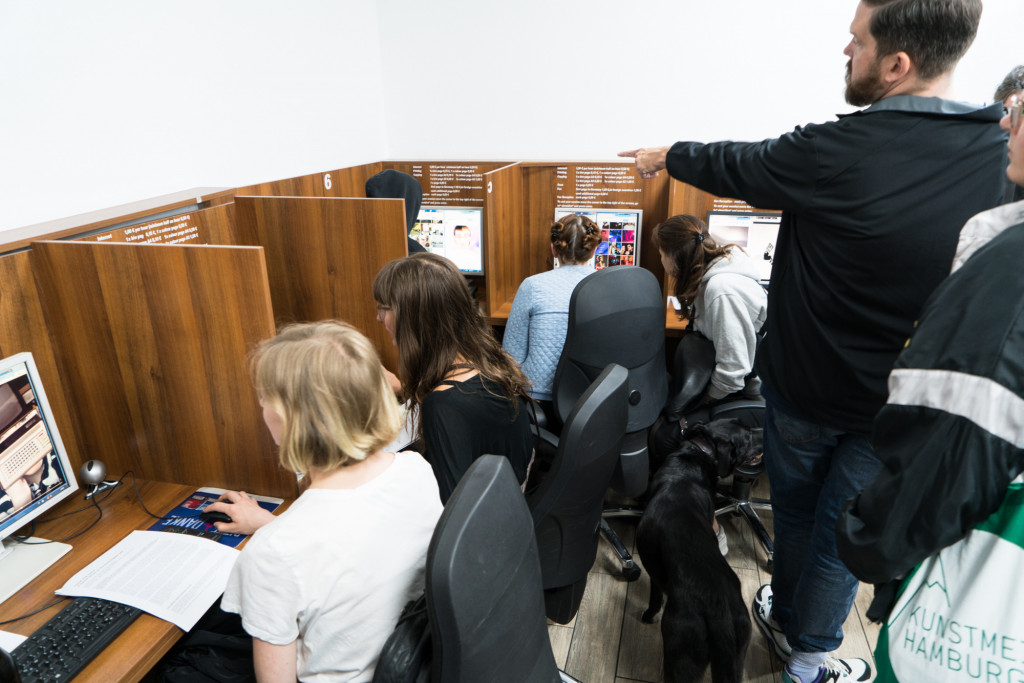Speed Show: FACE THE FACE

FACE THE FACE
A Speed Show on the Post-Digital Self
curated by
Anika Meier & Aram Bartholl
5.7.2019, 7:00 – 10:00pm
Internet Cafe – Midnightshop
Schönhauser Allee 188, Ecke Torstr., 10119 Berlin
Participating artists:
Lisette Appeldorn, Jeremy Bailey, Nadja Buttendorf, Petra Cortright, Constant Dullaart, Tom Galle, Lauren Huret, Johanna Jaskowska, Andy Kassier, Hanneke Klaver, Lynn Hershman Leeson, Echo Can Luo, Ines Marzat, Jillian Mayer, Andy Picci, Selam X
Social media algorithms have a preference for faces. People prefer friends to strangers and are more comfortable with the familiar in general. This preference applies to their own faces, too. Studies have shown that people like their mirror-reflected face most because that is how they are used to seeing themselves. “The selfie,” writes Nathan Jurgenson, “lets us share that mirror-view, what we see when contemplating our self, considering what we are.” Science is not yet convinced of what the critics are absolutely sure of: people who take selfies are narcissistic exhibitionists.
These days, when a person takes a photo to their plastic surgeon, it is of their own face. Smoothed and beautified by Snapchat and Instagram filters, it is the new ideal. Filters make people feel attractive. Masks and filters function as a barrier between the individual and the world, and people have always felt the need to change themselves by wearing makeup, getting plastic surgery, donning masks ,or using filters that simultaneously hide and reveal. Mask culture, thousands of years old, is currently undergoing a digital renaissance. Software-driven face-recognition apps on smartphones enable a new, shared experience of this ancient tradition. “The self one tries to express tends to be new, exciting, confessional, sexy, etc., because it plays as an advertisement. Identity is a series of ads for a product that doesn’t exist,” writes Rob Horning on digital identities.
In the early 1980s Lynn Hershman Leeson addressed the ways media changes the view of the self and promotes stereotypical norms in her series “Phantom Limbs.” Jeremy Bailey has been playing with floating, 3D objects in front of the camera since the early 2000s. The elaborate hardware and tracking programs he began with have now completely disappeared into the smartphone. Petra Cortright started using commercially-available webcam software with basic effects and folklore-inspired filters to create her series of YouTube portraits in 2009.
Now, a new generation of net artists is reflecting on the presentation of faces in the digital age. @AndyKassier, for example, explains in his video how to make the perfect selfie, while @jillianmayer gives tips on how to hide from surveillance cameras with makeup in her tutorial. @andypicci uses filters to criticise the desire for image cultivation in the era of social media and @johwska addresses the sort of beauty ideals promoted by celebrities like Kim Kardashian and Kylie Jenner every day. The @selamxstudio collective, in turn, shows what happens when a beauty AI does Kyle Jenner’s make-up.
http://speedshow.net/speed-show-face-the-face/
The SPEED SHOW exhibition series was conceived by artist Aram Bartholl in June 2010. The basic idea of this exhibition format is to create a gallery like opening situation for browser-based internet art in a public cyber cafe or internet shop for one night. The exhibition format is free and can be applied by anyone at any place.